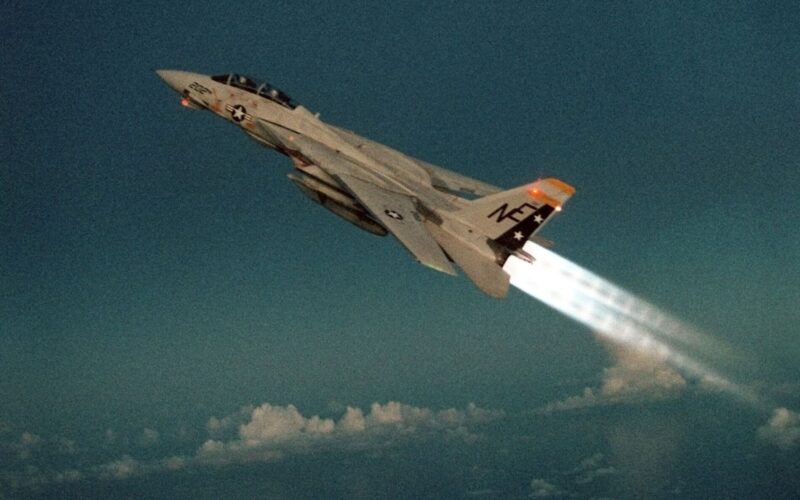Fighter jets are fast. Everybody knows that. As time passes, newer and more advanced fighter jets should be faster, right? Not really. Let’s gather some data and look into that.
If we graph top speeds of the most prominent (meaning, most produced) jets since the 40s, there are a couple of noticeable trends. You can see them in a chart below, representing most of the fighters with over 1000 units produced, and some with slightly less. The most numerous modification (or a couple of them) is represented there, coupled with the date the jet was put into service.
Of course, at first jets were getting faster, racing to the sound barrier. The barrier got broken and things got crazy from there, culminating with planes like F-4 and MiG-25: machines that relied on speed more than anything. But then, somewhere between the 70s and the 80s, it went down. What happened?
Fighter jets are often grouped into generations: between the first and the fifth (the current one) they were advancing in jumps, following technology leaps like developments in avionics, weapons and engines. The first generation of jets were basically WWII-era dogfighters with jet engines attached to them; the last generation employs sophisticated digital, informational and stealth technologies to analyze the battlefield, work in conjunction with other systems and avoid detection.
Speed, in its own way, is just another tool with which the fight can be fought. Whether intercepting the enemy or getting out of trouble, it allows controlling the engagement and dictating the terms on the battlefield.
The great influence of the approach that different fighter jet generations take on speed can be seen in a jagged line that developed between the late 50s and the early 70s: older-generation jets, such as J-6 or F-5E, introduced alongside their more advanced peers, leave a “dent” there.
The situation gets clearer if we take a look at the average maximum speed of each generation. The 3rd generation reached the peak; the 4th became slower. The turning point did not really come between generations, it came at a very particular time. In the early 80s, when the first examples of the 4th generation jets – F-14, F-15 and MiG-31 – were already in service. But even with them, the trend is very clear.
The 4th generation fighter jets did not rely on their speed; maneuverability, situational awareness and advanced weapons became more important. The 5th generation doubled on that, adding stealth into the mix. It compromised the traditional flight characteristics, but the sacrifice had to be accepted.
A couple of caveats have to be made though. First, a lot of early, fast 4th generation fighter jets – mostly F-15s and MiG-31s – still remain in service and supplement newer models with their raw speed. Second, the impression that newer airplanes are less powerful because they can’t reach Mach 3 is not really true: their engines are, on average, not that much weaker. It’s just that their airframes are not optimized for mind-bending speeds, opting for acceleration and maneuverability instead.
Thrust-to-weight ratio is a nice way to illustrate that. It is obtained by dividing the power of aircraft engines (in kilogram/seconds or pound/seconds) by its weight (kilograms or pounds), and shows how much muscle an airplane has for its mass. The bigger the number is, the more force is behind each kilogram, and if it is above 1 – an aircraft can not only fly, but accelerate vertically.
The increase here, although a bit jagged, is clearly visible. 4th and 5th generation fighter jets are often above the 1 ratio line – they are actually more powerful than earlier, faster airplanes. And even those that don’t cross the line, are almost on it. Their ratios are represented with full fuel tanks and optimal armament, but by the time an airplane reaches its destination, a lot of fuel is burned, greatly reducing weight. With just 50% of fuel, almost all 4th and 5th generation fighter jets have thrust-to-weight ratio greater than 1.
So, while fighter jets have lost their speed, they did so on purpose and did not become any weaker in the process.

